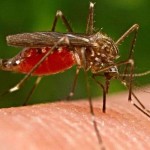
Malaria mortality rates have fallen by more than 25% globally since 2000, and by 33% in the WHO African Region, according to the World Malaria Report 2011, issued by the World Health Organization. WHO warns that a projected shortfall in funding threatens the fragile gains and that the double challenge of emerging drug and insecticide resistance needs to be proactively addressed.
“We are making significant progress in battling a major public health problem. Coverage of at-risk populations with malaria prevention and control measures increased again in 2010, and resulted in a further decline in estimated malaria cases and deaths,” says Dr. Margaret Chan, WHO Director-General. “But there are worrisome signs that suggest progress might slow.”
During the past decade, malaria incidence and mortality rates have been cut in all regions of the world, according to the World Malaria Report 2011. In 2010, there were an estimated 216 million cases of malaria in 106 endemic countries and territories in the world. An estimated 81% percent of these cases and 91% of deaths occurred in the WHO African Region. Globally, 86% of the victims were children under five years of age.
There were an estimated 655,000 malaria deaths in 2010, which is 36,000 lower than the year before. While this 5% year-on-year decline represents significant progress, the mortality figures are still disconcertingly high for a disease that is entirely preventable and treatable.
“With malaria deaths in Africa having fallen significantly since 2000, the return on our investment to end malaria deaths has been greater than any I have experienced in the business world. But one child still dies every minute from malaria – and that is one child and one minute too many,” says Raymond G. Chambers, the UN Secretary General’s Special Envoy for Malaria.
“The toll taken by the current economic crisis must not result in our gains being reversed, or progress slowed. With Secretary-General Ban Ki-moon’s charge for near zero deaths by end of 2015, turning back now is not an option,” Mr Chambers adds.
Projected shortfall in funding
Despite significant progress in 2010, the projected shortfall in malaria funding threatens the hard-earned gains of the last decade. International funds for malaria control reached US$ 1.7 billion in 2010 and US$ 2 billion in 2011, but remained significantly below the US$ 5-6 billion that would be needed annually to achieve global malaria targets. According to projections in the report, despite increased support from the United Kingdom, malaria funding will slightly decrease in 2012 and 2013, and will likely drop further to an annual US$ 1.5 billion by 2015.
Triggered primarily by the reduction in available funding within the Global Fund to Fight AIDS, Tuberculosis and Malaria, this decrease will considerably alter the malaria control landscape and threaten the sustainability of the multi-pronged approach to fight the disease, which relies heavily on investments in bed nets, indoor residual spraying, diagnostic testing, treatment, research and innovation.
“We need a fully-resourced Global Fund, new donors, and endemic countries to join forces and address the vast challenges that lie ahead. Millions of bed nets will need replacement in the coming years, and the goal of universal access to diagnostic testing and effective treatment must be realized,” says Dr. Robert Newman, Director of WHO’s Global Malaria Programme.
Source: WHO

















